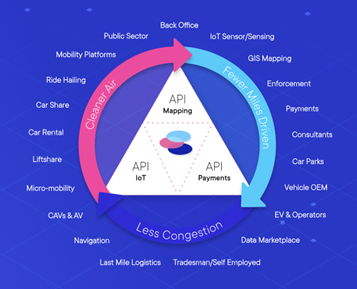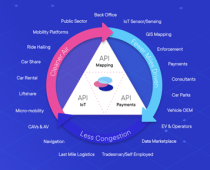Kerbside Management: reflections from the ADEPT Traffic Managers Conference 2024
In a guest blog for ADEPT, Mike Potter, Head of Customer Success at AppyWay.com, explores the evolving landscape of kerbside management and its crucial role in shaping sustainable urban spaces.
The ADEPT Traffic Managers Conference is the one I look forward to each year, offering a great opportunity to catch up with familiar faces and meet new ones. A big thank you to the team at ADEPT and the regional leads for organising another great event that is becoming well established in the calendar for Highway Authorities.
During the event, I was struck by how intertwined highway and transport planning really are. It hit me that no one can go it alone in this field - we all need to work together, both within our organisations and with others. I loved hearing stories of how different authorities are teaming up to get a better grip on their networks and the demands they face.
It got me thinking: we need one source of truth for how our networks are set up, and it must be accessible to everyone in highway and transport planning. Sure, we have asset management plans, but I realised they're often more about keeping tabs on what's there rather than how it's being used.
The evolution of kerbside management
I think kerbside management and Digital Traffic Orders (D-TROs) are key here. In my traffic management days, I always saw traffic order data as more than just paperwork. Most highway schemes depend on traffic orders, whether temporary, permanent, or experimental. That’s why I firmly believe Kerbside Management and D-TROs deserve to be put in the spotlight.
Now, I’d forgive you for thinking: ‘kerbside management? Isn't that just about parking controls and enforcement?’ - that is, after all, the traditional view. As I shared in my presentation at the conference, it's so much more than that. It's a multifaceted approach encompassing policy, strategy, infrastructure development, and even economic revitalisation.
Take Lambeth Council, for instance. Their progressive strategy aims to increase sustainable kerbside use from 6% in 2023 to an impressive 25% by 2030.
It isn't just a set of arbitrary numbers; it's a roadmap for transforming their urban landscape, backed by elected members and relevant portfolio holders. It's the kind of forward thinking approach that I think is needed in many more areas - I hope that you can see how a similar approach could be adopted.
Demystifying the digital kerbside
The event's highlight was chatting with colleagues off stage. Many were curious, but a bit daunted, by digital kerbside management. If you're feeling the same, don't worry - it's simpler than it looks. The trick is knowing what data matters and how to use it. The upcoming D-TROs from the DfT might seem like extra paperwork, but they could transform our approach to public highway network management.
During a particularly engaging coffee break discussion, I shared the example of the Haringey Council. As they embark on establishing their Kerbside Management Strategy, their primary focus is on monitoring its effectiveness.
It's a principle we can all learn from why start a journey if you can't measure your progress? Haringey are only able to consider doing this owing to their forward thinking approach to digital traffic order management.
Success stories that inspire
New York City's 2009 initiative, which improved bus routes and reallocated streets to pedestrian areas seemed to draw particular interest. The results speak for themselves in terms of impact and also the breadth of highway, climate and economic priority areas:
- Empty shops/premises decreased by 49% (compared to a 5% increase borough-wide).
- Speeding decreased by 16%.
- Injury crashes decreased by 26%.
- 74% of users preferred the new extended square.
The sustainable kerbside: our collective future
As the conference progressed, one theme became increasingly clear: sustainability is no longer a nice-to-have, it's a must-have. In the context of kerbside management, this means prioritising the needs of the community, the environment and the local economy.
An afternoon session posed a thought-provoking question: Is traffic management still just about keeping vehicles moving?
This reinforced my view that kerbside management and D-TROs should be integral to overall network management. They're key to promoting sustainable transportation. The kerbside can be designed to keep traffic flowing or to shape future mobility. Either way, Digital Traffic Orders will help you understand your current situation and guide your future kerbside strategy.
Looking ahead
As I left Derby, filled with new ideas, I couldn't help but feel optimistic about the future of mobility.
The kerbside is no longer just a place to park cars. As traffic managers, it's up to us to maximize its potential. After the inspiring discussions at the ADEPT Traffic Managers Conference, I'm more convinced than ever that we're up to the challenge.
Author
By Mike Potter (LinkedIn), Head of Customer Success, AppyWay.com
Further information
- For those hungry for more information, I highly recommend checking out the practical resources page prepared by AppyWay. It's filled with handy ebooks and reports that can help you dive deeper into this fascinating field.
- If you’d like to start your Council’s journey towards the digitalised kerbside, visit AppyWay’s Kerbside Management page to view our solution - already used by the authorities mentioned, and more!




